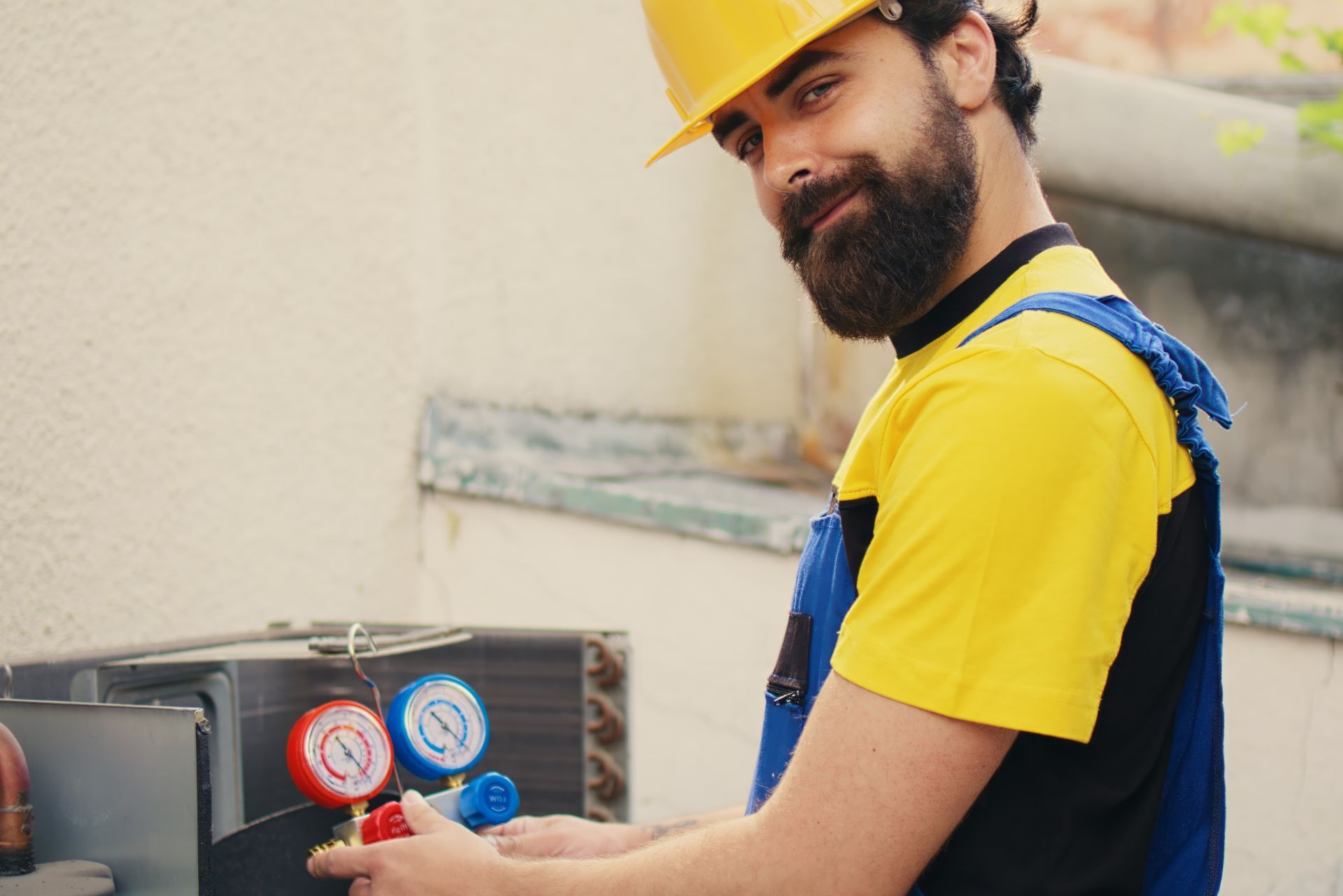Top 3 Recommended Policies

Working as an HVAC contractor in California means adapting to one of the most diverse climates in the country. From coastal humidity to desert heat and wildfire-prone regions, every job brings unique challenges. With strict energy regulations and rising project costs, contractors here need insurance that keeps pace with both environmental and financial risks. This guide breaks down HVAC contractor insurance in California, explaining what coverage types matter most, how to manage costs, and what factors set this market apart. We will also touch on how issues like extreme heat and wildfires are influencing insurance rates and what business owners can do to stay protected.
Understanding the Insurance Needs of HVAC Contractors in California
HVAC contractors face a wide range of risks daily, from on-site accidents to equipment damage. Insurance plays a pivotal role in mitigating these risks and ensuring business continuity. In California, the insurance landscape is shaped by both standard industry risks and state-specific environmental factors.
At the core, HVAC contractors typically require general liability insurance, workers’ compensation coverage, and commercial auto insurance. General liability protects against third-party claims such as property damage or bodily injury, while workers’ compensation covers employee injuries sustained on the job. Commercial auto insurance is necessary for vehicles used in service calls and equipment transport.
California’s regulatory environment also influences insurance requirements. Contractors must comply with state labor laws and safety standards, which can impact premium rates and coverage options. Moreover, the state’s exposure to natural disasters like wildfires and extreme heat events adds layers of complexity to risk management strategies. For instance, contractors working in areas prone to wildfires may need to take extra precautions, such as ensuring that their equipment is safeguarded against fire damage, which can further affect their insurance premiums and coverage terms.
Types of Insurance Coverage HVAC Contractors Need
While general liability and workers’ compensation are fundamental, HVAC contractors should consider additional coverages tailored to their specific risks:
- Commercial Property Insurance: Protects tools, equipment, and buildings against fire, theft, or vandalism.
- Business Interruption Insurance: Covers lost income if operations are halted due to covered events, an increasingly important consideration given California’s wildfire season.
- Professional Liability Insurance: Also known as errors and omissions insurance, this covers claims arising from design or installation mistakes.
- Pollution Liability Insurance: Addresses risks related to refrigerant leaks or other environmental hazards specific to HVAC work.
Choosing the right combination of coverages depends on the size of the business, the scope of work, and the geographic areas served. Additionally, HVAC contractors should be aware of the importance of reviewing their insurance policies regularly. As their business grows or as they take on new projects, their insurance needs may evolve. For example, expanding into new regions could introduce different risks, necessitating adjustments in coverage. Furthermore, staying informed about changes in state regulations and industry standards can help contractors maintain adequate protection and avoid potential gaps in coverage.
Moreover, networking with other professionals in the HVAC industry can provide valuable insights into best practices for risk management and insurance. Many contractors find that joining industry associations or attending trade shows not only enhances their technical skills but also offers opportunities to learn about the latest insurance products and services tailored to their needs. By actively engaging with the HVAC community, contractors can better navigate the complexities of insurance and ensure they are adequately protected against the myriad of risks they face in their day-to-day operations.

Environmental Risks and Their Impact on HVAC Insurance in California
California’s unique environmental challenges significantly influence the insurance landscape for HVAC contractors. Two critical issues are the increasing frequency of wildfires and the economic impact of extreme heat events.
Brian Murphy, senior vice president at Heffernan Insurance Brokers, emphasizes the growing wildfire risk: “Wildfires are happening with greater frequency than ever,” highlighting how the definition of wildfire-exposed areas continues to expand across the state. This trend has direct implications for insurance underwriting and premium costs for contractors operating in vulnerable regions. As wildfires become more prevalent, insurers are compelled to reassess their risk models, often resulting in higher premiums and more stringent coverage limitations for those in affected areas.
Furthermore, the California Department of Insurance released a report in July 2024 revealing $7.7 billion in losses attributed to extreme heat events. These events not only strain HVAC systems but also create a surge in demand for repairs and replacements, complicating risk assessments for insurers. The report underscores the importance of understanding how climate change is reshaping the landscape of risk, with HVAC systems often working overtime to combat the rising temperatures, leading to increased wear and tear and potential system failures.
Given these environmental factors, HVAC contractors must be proactive in addressing wildfire and heat-related risks through appropriate insurance and risk mitigation strategies. For more detailed insights, the California Department of Insurance’s report on extreme heat losses offers valuable data and analysis. Additionally, contractors should stay informed about local regulations and incentives aimed at promoting energy efficiency and resilience against climate-related risks, which can further enhance their operational stability.
How Wildfires Affect Insurance Premiums and Coverage
Wildfire exposure increases the likelihood of property damage and business interruptions, which can lead to higher insurance premiums for HVAC contractors. Insurers may also impose stricter underwriting guidelines or exclude certain coverages in high-risk zones. This shift in policy can leave contractors vulnerable, as they may find themselves without adequate coverage during critical times when they need it most.
Contractors working in wildfire-prone areas should consider investing in additional safeguards, such as fire-resistant storage for equipment and comprehensive business interruption policies. These measures can help reduce potential losses and demonstrate risk awareness to insurers. Furthermore, adopting advanced technologies, such as predictive analytics and real-time monitoring systems, can enhance operational efficiency and provide contractors with a competitive edge. By leveraging these tools, HVAC businesses can not only improve their response times during emergencies but also present a compelling case to insurers about their commitment to risk management and sustainability.
Cost Factors and Average Insurance Premiums for HVAC Contractors
Insurance costs for HVAC contractors in California vary based on several factors, including business size, revenue, payroll, and geographic location. According to industry data, general liability insurance rates typically range from 1.3% to 2.6% of annual revenue, while workers’ compensation rates can vary between $2.24 and $5.14 per $100 of payroll.
For example, HVAC contractors with $150,000 in annual revenue can expect to pay around $1,800 for general liability coverage. Workers’ compensation premiums are calculated based on payroll and risk classification, with the higher end of the scale reflecting more hazardous work environments or claims history.
Understanding these cost benchmarks helps contractors budget effectively and negotiate better terms with insurance providers. More detailed information on HVAC insurance premiums can be found at ContractorNerd’s HVAC insurance guide.
Factors Influencing Premium Rates
Several elements influence insurance premiums for HVAC contractors:
- Claims History: A history of frequent claims can lead to higher premiums or policy cancellations.
- Business Size and Revenue: Larger businesses with higher revenue typically pay more due to increased exposure.
- Geographic Location: Operating in wildfire-prone or urban areas can affect rates.
- Safety Practices: Strong safety protocols and employee training can reduce risk and premiums.
Contractors should regularly review their insurance coverage and risk management practices to optimize costs and protection. Additionally, the type of services offered can also impact insurance costs. For instance, HVAC contractors who provide installation services may face different risks compared to those who focus solely on maintenance and repair. This distinction can lead to variations in premium rates, as installation work often involves more complex and potentially hazardous tasks.
Moreover, the age and condition of the equipment used by HVAC contractors can also play a role in determining insurance costs. Older equipment may be more prone to malfunction, leading to a higher likelihood of claims, while newer, well-maintained tools and machinery can demonstrate a commitment to safety and efficiency. This proactive approach can not only enhance the contractor's reputation but also contribute to lower insurance premiums over time.
Market Trends and Challenges Facing California HVAC Contractors
The HVAC industry in California is experiencing both growth and challenges. While the market size is expanding, contractors face headwinds such as fluctuating demand and rising insurance costs. Carrier CEO Dave Gitlin recently noted a downturn in residential HVAC volumes during the late summer months, which could impact contractor revenues and their ability to invest in comprehensive insurance coverage.
Additionally, the increasing complexity of insurance claims related to environmental events and business interruptions requires contractors to be more diligent in their coverage choices. The California Department of Insurance offers extensive studies and reports that provide insights into these trends and help contractors understand the evolving insurance landscape. As climate change continues to exacerbate weather-related events, HVAC contractors must not only navigate the financial implications but also adapt their services to meet the changing needs of consumers who are increasingly seeking energy-efficient and sustainable solutions.
For those interested, the California Department of Insurance’s repository of studies and reports is a valuable resource for staying informed about industry risks and insurance developments. Furthermore, contractors can benefit from engaging in industry forums and networking events that focus on best practices and innovative strategies in the HVAC sector. These gatherings often provide insights from peers who have successfully navigated similar challenges, fostering a community of support and knowledge sharing.
Adapting to a Changing Market
To thrive amid these challenges, HVAC contractors should focus on:
- Implementing robust safety and risk management programs.
- Maintaining clear communication with insurers about changing risks.
- Exploring innovative insurance products tailored to extreme weather and wildfire exposures.
- Monitoring market trends to anticipate shifts in demand and adjust business strategies accordingly.
Moreover, investing in employee training and development can enhance service quality and operational efficiency. As technology evolves, HVAC systems are becoming more sophisticated, requiring technicians to be well-versed in the latest tools and techniques. By prioritizing ongoing education, contractors can ensure their teams are equipped to handle advanced systems, thereby increasing customer satisfaction and loyalty. Additionally, embracing digital marketing strategies can help contractors reach a broader audience, allowing them to showcase their expertise and the unique value they bring to the table in a competitive marketplace.

Conclusion: Protecting Your HVAC Business in California
California HVAC contractors operate in a dynamic environment marked by rapid industry growth and significant environmental risks. Navigating the insurance landscape requires a thorough understanding of the types of coverage available, the impact of wildfire and extreme heat risks, and the factors influencing premium costs.
By staying informed and proactive, contractors can secure the right insurance policies to protect their businesses from liability, property damage, and operational interruptions. Leveraging resources such as the IBISWorld market report and the California Department of Insurance’s analyses can empower contractors to make informed decisions in an evolving market.
Ultimately, comprehensive insurance coverage combined with effective risk management is essential for long-term success and resilience in California’s HVAC industry.
Contact Us
HVACInsure is fully licensed and permitted to sell contractor and commercial insurance in California.
We proudly serve clients throughout California and maintain partnerships with local California insurance carriers to ensure HVAC professionals receive compliant, affordable, and comprehensive coverage that meets project and regulatory requirements.

About The Author: James Jenkins
I’m James Jenkins, Founder and CEO of HVACInsure. I work with HVAC contractors and related trades to simplify insurance and make coverage easier to understand. Every day, I help business owners secure reliable protection, issue certificates quickly, and stay compliant so their teams can keep working safely and confidently.
